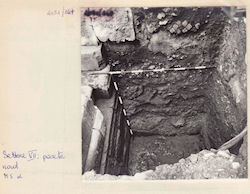
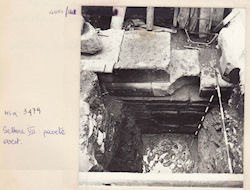
Figure 53: Photograph of settore VII-IX from the south (AFSRCM, S. Omobono, b. 31, 5, c. 4051.147).
Figure 54: Photograph of settore VII-IX from the east (AFSRCM, S. Omobono, b.31, 5, c. 4051. 148).
The systematic investigation of settore VII was begun on 29 September 1977; the first phase of excavation continued until 5 October (AFSRCM, S. Omobono, b. 31, 5, cc. 4051.143-153). The trench is located outside and to the east of the podium of the temples, corresponding to settore V within the podium (Figure 34).
Before this excavation, superficial work, which cannot be put into a chronological sequence based on the documentation currently available, had led to the identification of three layers. Layer 1, interpreted in connection to the destruction of the area by fire in 213 BCE; layer 2, made up of 'terra nera grassa e organica con alla base uno strato di terra bruciata' (rich, black organic soil with a layer of burnt soil at its base); and layer 3, composed of nearly sterile soil, at a depth of 2.10m below the edge of the trench. Underneath this, a layer of tufo fragments formed a kind of beaten-earth surface connected to the lower edge of the fourth course of cappellaccio of the podium.
The excavation began with the removal of layer 4, made up of clay; it was noted that this layer was contaminated by material from more recent layers as the faces of the trench were being secured with boards. Continuing work revealed fragments of cappellaccio, travertine, and tufo rosso del Campidoglio. Nevertheless, it was decided to restrict the excavation to the southern half of the trench. The layer ended in correspondence with the upper part of the seventh course of blocks of the podium. Below it was layer 5, also characterised by a clayey matrix but with organic material and ceramic sherds (bucchero, Attic lip cups, Corinthian and Etrusco-Corinthian pottery). Among the bucchero, an amphoriskos, almost whole, is particularly noteworthy; a bronze-sheet female figurine was also found. The removal of the layer brought to light the eighth course of blocks of the podium (Figures 53 and 54; the description in the notes suggests that layer 4 ended in correspondence with the seventh course, so that layer 5 would have covered the whole of the eighth course, in contrast to what is represented in Figure 57).


Figure 53: Photograph of settore VII-IX from the south (AFSRCM, S. Omobono, b. 31, 5, c. 4051.147).
Figure 54: Photograph of settore VII-IX from the east (AFSRCM, S. Omobono, b.31, 5, c. 4051. 148).
Settore IX, on the southern side of settore VII, from which it was divided by a medieval wall, was excavated beginning on 3 June 1978 (AFSRCM, S. Omobono, b. 31, 5, cc. 4051.159-193; cf. 157 and 158; at the same time, a trench, designated 'eastern trench', was opened, leading to the discovery of the extrados of a large Republican drainage duct and adjacent channel). After the removal of a first layer, the underlying stratum was found to contain destruction debris (tiles), which the excavators connected to the fire of 213 BCE. The medieval wall separating the two settori was then removed (this situation is clearly illustrated by a number of photographs in the excavation diary; AFSRCM, S. Omobono, b. 31, 5, cc. 4051.157-159).
As settore VII was being cleaned, some 50cm of the podium dating to the first phase of the Archaic temple came to light; according to the notes, it consisted of two blocks of tufo with a rounded profile.
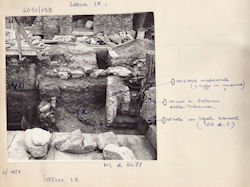
Figure 55: Photograph of the most recent layers in settore VII-IX from the west (AFSRCM, S. Omobono, b. 31, 5, c. 4051.154).
On 7 June, settori VII and IX were combined by completing the removal of the medieval wall (Figure 55; the dimensions of the unified trench were 4.60 x 2.00m). It was noted that the wall contained a marble cover tile (Figure 56). On the base of the wall was a well built of tiles and bricks, as well as two layers that the excavators deemed to have been contaminated. Layer 2A was then distinguished, probably because it was thought not to have been contaminated; it contained sherds of sigillata chiara, sigillata comune, and amphorae. The medieval well and the northern area of settore IX were then excavated. The following stratigraphical sequence was recorded for the southern area:
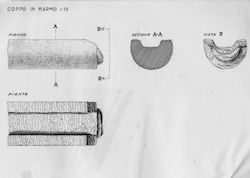
Figure 56: Drawing of marble cover tile, settore VII-IX (AFSRCM, S. Omobono, b. 31, 5, c. 4051.164).
The excavation of the northern area of settore IX was then resumed with the removal of layer 5, characterised by fragments of peperino and tufo rosso, some ceramic sherds, and fragments of red tiles. The notes read: 'Si approfondisce lo strato 5 (sopra la modanatura del T.A.) e si scava il pane di argilla esistente nel punto dove manca il filare superiore al toro. In questo pane si trovano scarsi fr. ceramici, ma una buona quantità di terrecotte architettoniche del T.A. di cui due fr. con decorazione' (layer 5 was taken further down (reaching the moulding of the Archaic temple) and the packing of clay that took the place of the missing course above the torus was excavated. In the packing were found few sherds but a good quantity of architectural terracottas from the Archaic temple, two of which were decorated). It is difficult to understand why layer 5 is described as being above the moulding of the Archaic temple, since in the section it is depicted as being to the side and at a lower elevation). On 15 June, while excavating the soil abutting the podium, two adjacent blocks with torus moulding were noticed, the first of which was covered by the eighth course, the sixth in cappellaccio, of the podium of the twin temples; above them was another block cut by the eighth course.
The excavation continued up to the point where the blocks of the Archaic temple ceased. The soil abutting the temple, which began under the torus moulding of the Archaic podium, was then excavated; this layer was equated to Gjerstad's 13C. It was in layer 5 that the ivory feline figurine inscribed in Etruscan and whole pots connected to the votive deposit were discovered. Layer 6 was described as a beaten-earth surface of clay and tufo rosso fragments, as were layers 7 and 8, the former with closely packed tufo fragments.
The top portion of layer 6 was interpreted as a beaten-earth surface connected to the second phase of the temple, while the rest of the layer was grouped with the first phase of the temple (AFSRCM, S. Omobono, b. 31, 5, cc. 4051.184). A few pages later in the excavation diary, it is suggested that layers 6, 7, and 8 made up the foundation fill of the second phase of the temple. Layer 9 was composed of clay with ceramic sherds, while layer 10 was a beaten-earth surface on which was built the structure of the first phase of the temple. Within the latter was the foundation trench for the blocks of the first temple. Two somewhat ambiguous sections illustrate the stratigraphic situation (Figs 57 and 58; AFSRCM, S. Omobono, b. 31, 5, cc. 4051. 180 e 192).
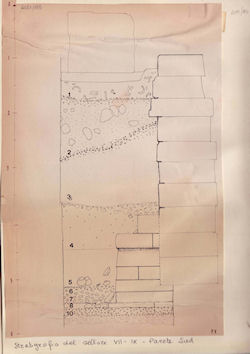
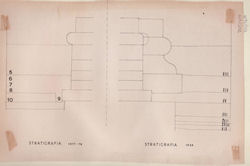
Figure 57: Section of settore VII-IX; south face (AFSRCM, S. Omobono, b. 31, 5, c. 4051.192).
Figure 58: Schematic section of the Gjerstad sounding next to the excavation section (AFSRCM, S. Omobono, b. 31, 5, c. 4051.180).
The excavation was halted on 30 June, though the resulting material was still being washed and classified the following June.
The excavation program begun by Colini on 7 June 1979 included the completion of the excavation of settori VII and IX (AFSRCM, S. Omobono, b. 31, 5, cc. 4051. 198). A few days were dedicated to the excavation of the well, designated 'X'. Moreover, additional material was removed from layer 5, including two complete bucchero oinochoai, some kyathoi and a lenticular vase, and small cups and fragments of Etrusco-Corinthian pottery. On 24 September, the trench was again prepared for excavation by securing the faces. Various materials were excavated from the favissa. On 28 September, the excavation was again stopped.
Over the years, the trench was never backfilled.
The stratigraphy of settore VII began 2.10m from the ground surface, as much had been removed during the 1937 work (Pisani Sartorio and Virgili 1979, 46, n. 4); the Late Antique and medieval phases are therefore not documented. In settore IX, on the other hand, a 'post-antique' wall and well connected to the changing use of the area were preserved. The ancient stratigraphy was characterised by various levelling fills, some of which may have represented walking surfaces, perhaps connected to the construction work (e.g. the surfaces of layers 2, 4, 6, 8, and 10). Specifically, the beaten-earth surface above layer 2 was interpreted as connected to the temples of the 4th century BCE. That above layer 4, composed of debris from the working of cappellaccio blocks, was understood as a surface for the construction of the podium (Pisani Sartorio and Virgili 1979, 41). Finally, it was suggested that layer 4, characterised by a clayey matrix, resulted from the collapse of the walls of the Archaic temple and was used later as a surface for the construction work of the twin temples.
Particularly important is the votive deposit found in layer 5, the most recent material from which seems to date around 540 BCE (Pisani Sartorio and Virgili 1979, 43 and 46, n. 10), though the chronological sequence of the assemblage remains to be clarified (see, for instance, Adornato 2003, 814-16, which also discusses the problem of the attribution of the materials to the first or second phase of the temple). Certainly, the materials were deposited after the destruction of the second phase of the temple, as suggested by the fact that they reach the level of the torus of the podium. This stratigraphic sequence seems analogous to the deposit identified by Gjerstad on the western side of the temple, where the layer containing the materials covers half of the torus of the second phase of the temple (Gjerstad 1960, table 3). It would therefore seem that the two layers may have been deposited simultaneously during a new phase of activity in the area. Both Coarelli 1988, 219-21, and Adornato 2003, 820-21, connect the favissa to the first phase of the temple, contrary to the interpretation of the excavators presented in Pisani Sartorio and Virgili 1979, 42-44; it should be stressed that the original deposit from which the materials derive is unknown.
Layers 6, 7, and 8 could in fact be identified as three floor levels connected to the first and second phases of the temple, while layer 10, on which the earliest structure was built, may correspond to the ground surface associated with either the use or construction of the temple (conversely, Adornato 2003, 821, presents layers 6, 7, 8 as part of a single event). This situation is further complicated by the fact that the two published sections differ in the representation of layer 9, which, as the documentation suggests, constituted the fill of the foundation trench of the first course of the Archaic temple. This layer is absent in the first section, while in the second the pit cuts layer 10 (Pisani Sartorio and Virgili 1979, 42, fig. 2, and 43, fig. 3); since the first course is higher than the pit as it is represented in the section, however, it can be surmised that it also cut at least layer 8, as in fact the more complete section seems to show. According to this reading, the earliest phase of the temple was associated with at least two surface levels.
© Internet Archaeology/Author(s)
University of York legal statements | Terms and Conditions
| File last updated: Mon Mar 12 2012